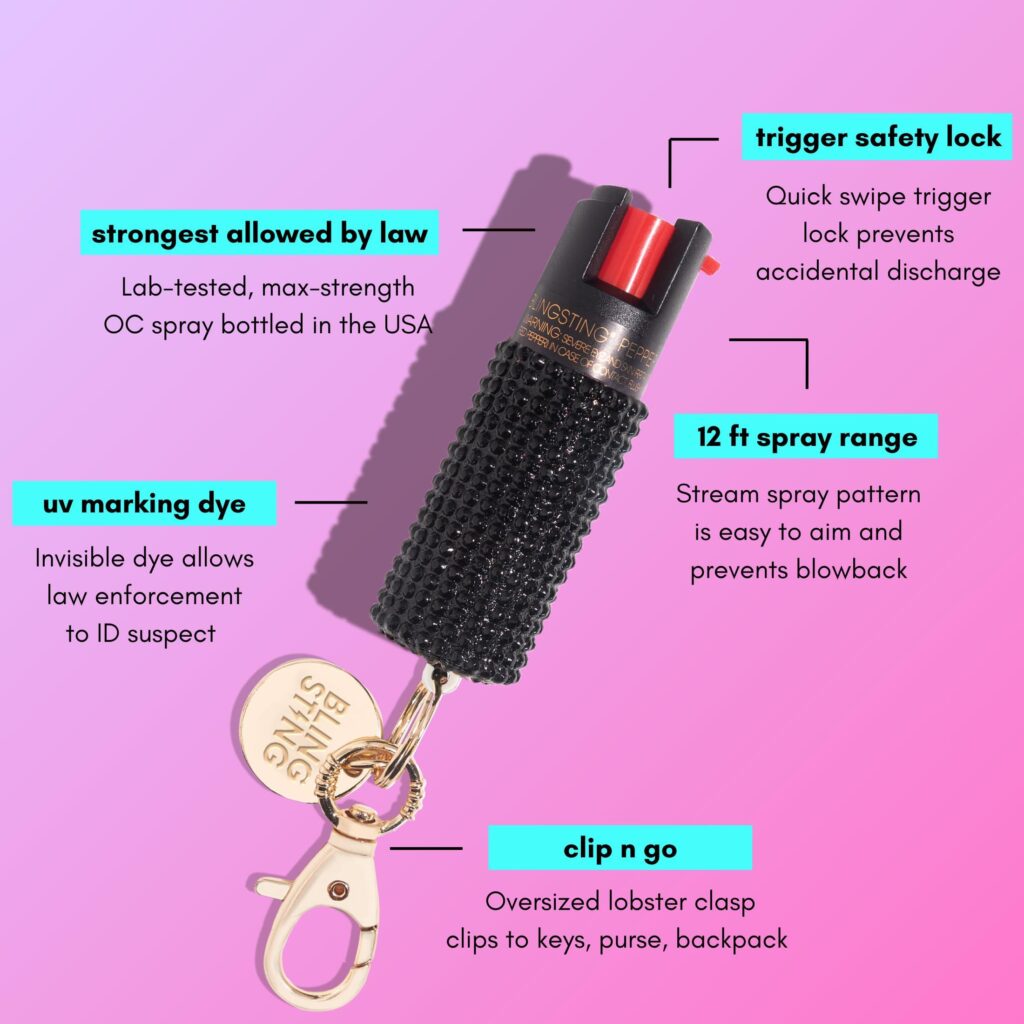Table of Contents
- Understanding Spray Range and Its Impact on Personal Safety
- Choosing the Right Spray Range for Different Self-Defense Scenarios
- Enhancing Effectiveness: Tips for Maximizing Spray Range Utility
- Safety Guidelines and Best Practices for Using Spray Devices Responsibly
- Key Takeaways
Understanding Spray Range and Its Impact on Personal Safety
When it comes to self-defense sprays, the effective distance they cover is a critical aspect that shouldn’t be overlooked. A spray with a well-calibrated range ensures that women can maintain a safe buffer zone from potential threats, allowing them to react promptly without getting dangerously close. Too short of a spray range might force a person to be within striking distance of an assailant, which increases risk, while an excessively long range can compromise accuracy, reducing the spray’s effectiveness. Achieving the right balance enhances confidence and maximizes protection when seconds really matter.
Several factors influence how spray range impacts personal safety, including:
- Accuracy: A precise spray minimizes the risk of missing the target when under stress.
- Wind conditions: Environmental elements can alter the spray trajectory, so an ideal range takes this into account.
- Spray pattern: Whether it’s a stream, fog, or gel, each affects how the spray behaves over distances.
Choosing the Right Spray Range for Different Self-Defense Scenarios
When selecting an effective spray range for self-defense, understanding the environment and potential threat scenarios is essential. For urban settings, where encounters can occur at close quarters, a shorter range spray (around 6-8 feet) offers quicker deployment and increased accuracy. This proximity allows rapid response without the risk of escaping the effective reach of the spray. Conversely, for outdoor or more open environments such as parks or parking lots, opting for a longer spray range (up to 12 feet or more) provides a valuable buffer, ensuring you can maintain safe distancing from an aggressor while still delivering effective deterrence.
Additionally, consider these key points when choosing the ideal range:
- Visibility: Longer ranges require clear lines of sight for precision and safety.
- Wind conditions: Outdoor use demands attention to wind direction to avoid self-exposure.
- Reaction time: Closer range sprays allow fast activation but may require greater composure under pressure.
- Legal regulations: Some jurisdictions restrict spray types or effective distance, so always verify local laws.
Enhancing Effectiveness: Tips for Maximizing Spray Range Utility
Maximizing the utility of your spray device hinges on understanding its effective range and practicing precision in deployment. When considering self-defense, distance is your first line of protection, so it’s crucial to familiarize yourself with the spray’s reach under varying conditions. Always test your spray in a controlled environment to gauge how far and wide the mist disperses. This knowledge allows you to maintain a safe buffer between yourself and a potential threat while ensuring the spray lands effectively on the target. Remember, even the strongest spray is ineffective if it doesn’t make contact.
To enhance effectiveness during critical moments, consider the following strategies:
- Aim for the attacker’s face, specifically targeting the eyes to impair vision and create an opportunity to escape.
- Maintain steady breath control to improve spray duration and control the burst.
- Position yourself with the wind at your back whenever possible to avoid blowback and maximize range.
- Keep the device easily accessible and practice quick draw techniques to reduce reaction time.
Integrate these tips with regular practice and vigilance, empowering yourself to respond confidently and effectively when safety is at stake.
Safety Guidelines and Best Practices for Using Spray Devices Responsibly
When using spray devices, it is imperative to prioritize accuracy and control to ensure effective defense while minimizing unintended consequences. Always maintain a secure grip and practice aiming at designated target areas, avoiding sprays towards the face unless absolutely necessary for self-protection. Remember that environmental factors like wind direction and proximity to bystanders significantly affect the spray’s trajectory and potency. Before deploying any spray device, take a moment to assess surroundings and ensure it won’t inadvertently impact non-threat targets, thereby preserving the safety of everyone nearby.
For best results and responsible usage, keep these key practices in mind:
- Regularly test the spray device to check functionality and familiarize yourself with the range and pattern.
- Store the device in an easily accessible yet safe location to prevent accidental discharge and ensure quick deployment.
- Train consistently with inert or training sprays to build confidence and muscle memory without risk.
- Review local laws and regulations governing the use of spray devices to guarantee compliant and lawful application.
- Dispose of expired or damaged canisters properly in accordance with environmental guidelines.
Key Takeaways
In conclusion, the spray range of personal safety devices plays a crucial role in empowering women to protect themselves effectively. Understanding and choosing sprays with an optimal range not only increases the likelihood of deterring potential threats but also provides users with the confidence and time needed to escape dangerous situations. As awareness grows around women’s safety, prioritizing factors like spray range ensures that self-defense tools truly serve their purpose-offering women a vital layer of security in an unpredictable world. Stay informed, stay prepared, and above all, stay safe.Check Our Other Blogs
- StunGun – Your Trusted Source for Stun Guns, Laws, and Self-Defense Tips
- PepperSprayLaws – Your Trusted Resource for Pepper Spray Information
- StunGunLaws – Your Trusted Guide to Stun Gun Legality and Safety




